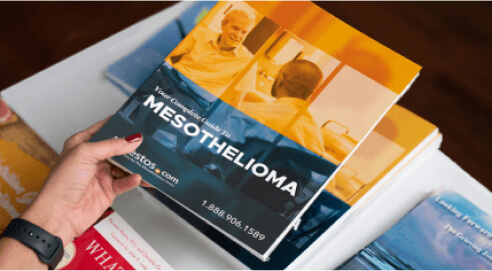1 in 4 Americans Don’t Know if Their Homes Contain Asbestos
Written by Karen Selby, RN | Edited By Walter Pacheco
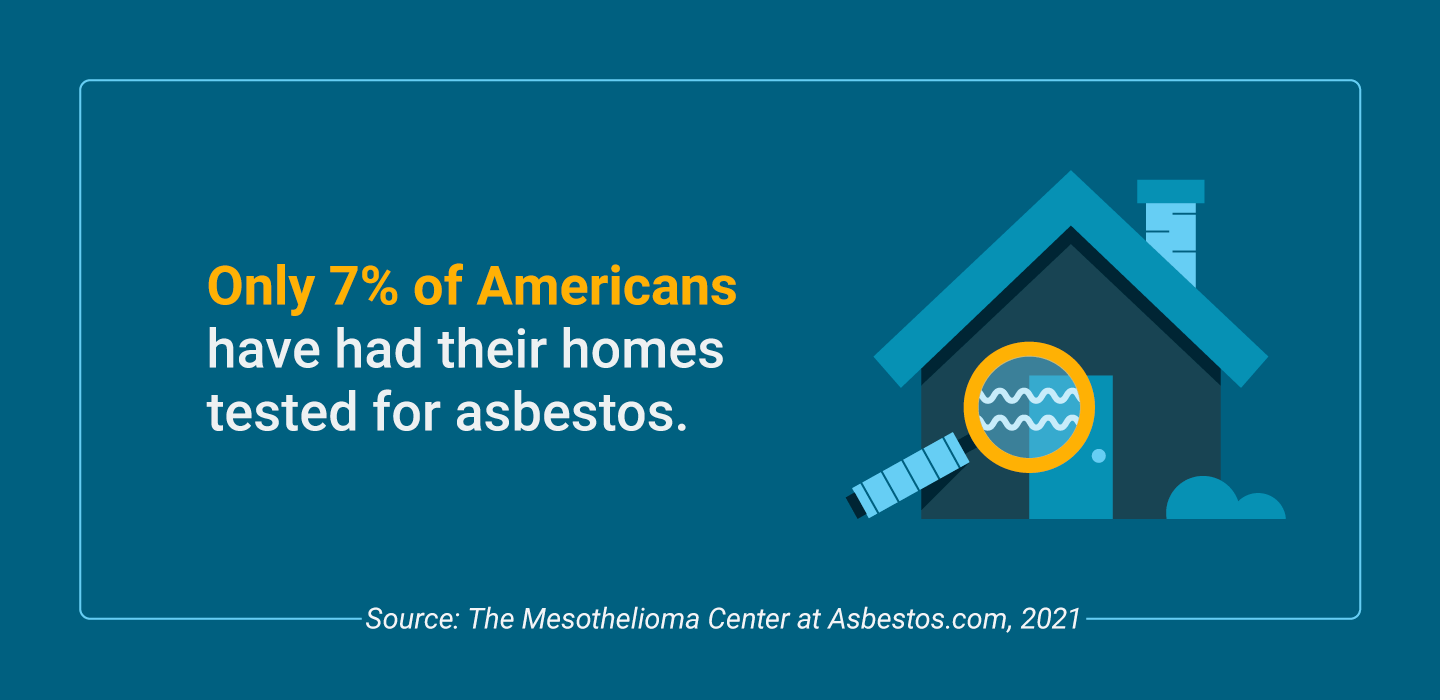
Asbestos is a naturally occurring mineral that was once used to make materials stronger and more resistant to heat. When products containing asbestos are disturbed or destroyed, tiny asbestos fibers are released into the air and can be inhaled or ingested, leading to serious health issues.
The dangers of asbestos, a known carcinogen, are well documented. Statistics show that asbestos-related diseases killed almost 40,000 Americans in 2018 alone. Major risks include the rare cancer mesothelioma, lung cancer, larynx cancer, ovarian cancer and asbestosis.
We conducted a survey to explore people’s awareness of asbestos overall and to identify whether they are concerned and taking action about potential asbestos exposure at home. This post will reveal the truth about asbestos and detail what to look for in your home. We also created a printable checklist to assist you in making your home safer.
24% of Americans Are Unsure if Their Homes Contain Asbestos
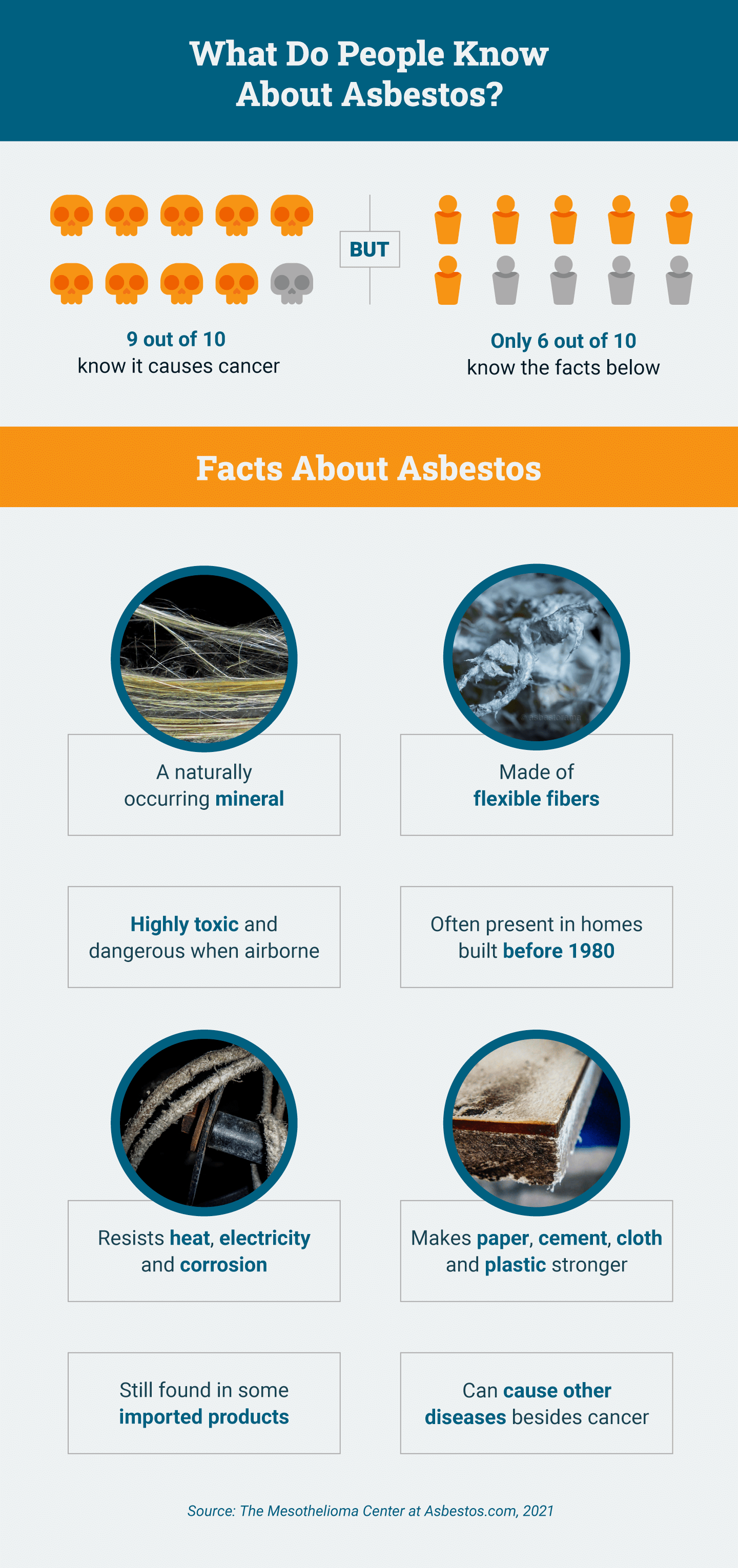
The survey conducted by our team at The Mesothelioma Center at Asbestos.com examined the knowledge and perspectives of 1,000 Americans about asbestos risks at home. We discovered:
- 1 in 4 Americans admitted they have no idea if their homes contain asbestos.
- 9 out of 10 respondents understand that asbestos causes cancer.
- But only 6 out of 10 people know more facts about asbestos than just the cancer risks.
The lack of awareness of the risks of potential asbestos exposure in one’s home could increase the possibility of accidental exposure.
71% of People Assume Their Homes Are Free of Asbestos
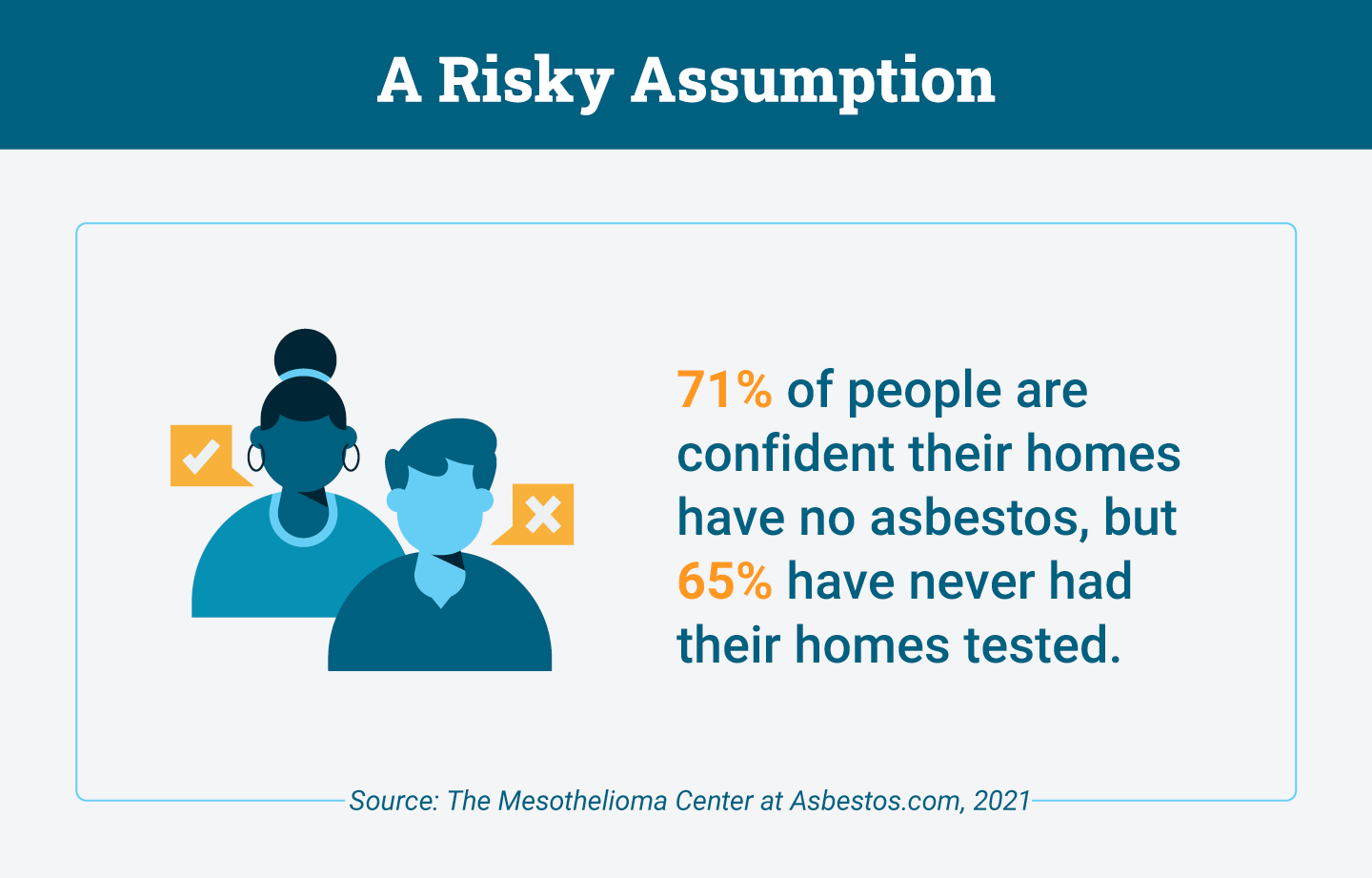
When comparing beliefs vs. proven knowledge of a home’s asbestos contamination risks, our survey revealed a concerning detail among respondents. Seventy-one percent of people were confident their homes did not contain asbestos, but 65% had never had their homes tested.
Warnings about the dangers of asbestos have been around for more than 50 years, making it feel like an outdated concern. But the risk that asbestos-contaminated products still exist within our homes persists and deserves serious attention.
Where to Look for Asbestos in Your Home
Asbestos is invisible to the naked eye, but with the proper precautions you can still perform a cursory examination of your home for possible risk factors.
Until the 1970s, many materials used in the homebuilding process contained asbestos. If your home was built after 1980, it most likely does not feature any products made with asbestos. If you do live in a home built prior to 1980, be aware of these products:
- Floor Tiles: The tiles themselves, as well as the backing and adhesives used with them, may contain asbestos. Fibers can be released if the tile is damaged or removed incorrectly.
- Furnaces, Steam Pipes, Boilers and Furnace Ducts: These products were often insulated with asbestos blankets or asbestos paper tape. The repair and removal process could easily release dangerous fibers into the air.
- Seals: The worn seals around door gaskets on furnaces, wood stoves and coal stoves can contain asbestos and emit fibers while in use.
- Materials on Walls and Ceilings: Popcorn ceilings and textured paint could contain asbestos. When the material becomes loose, crumbly or water-damaged, asbestos particles can become airborne.
- Fireplaces: Wood-burning fireplaces might have asbestos in the firebox, flue or hearth. The artificial ashes and embers used in older gas fireplaces may also contain asbestos.
- Cement Roofing, Shingles and Siding: If made with asbestos, these materials can release toxic fibers when damaged or removed.
- Household Items: Older appliances, pot holders, hair dryers and other products could contain asbestos and should be replaced.
The process of sanding, scraping, drilling, cutting, tearing or sawing many of these materials can also release asbestos fibers. If you discover these items in your home, contact an expert to discuss the safest options for removal.
According to the Environmental Protection Agency, asbestos-containing materials that are considered in good condition (undamaged and undisturbed) are unlikely to pose a risk to your health. The EPA’s advice is to leave such materials alone.
Warning Signs of Asbestos
Certain things about your home can serve as red flags for possible asbestos materials. Key factors to consider:
- Was your home built before 1980?
- Does your home contain vermiculite insulation?
- Was the vinyl flooring in your home installed between 1952 and 1980?
- Does your home have corrugated roofing?
- Are the walls in your home built from cement sheets?
- Does your home have a pre-1980 cement water tank?
If the answer is yes to any of the above questions, contact an asbestos abatement professional to review the situation.
Checklist for Examining Your House for Asbestos
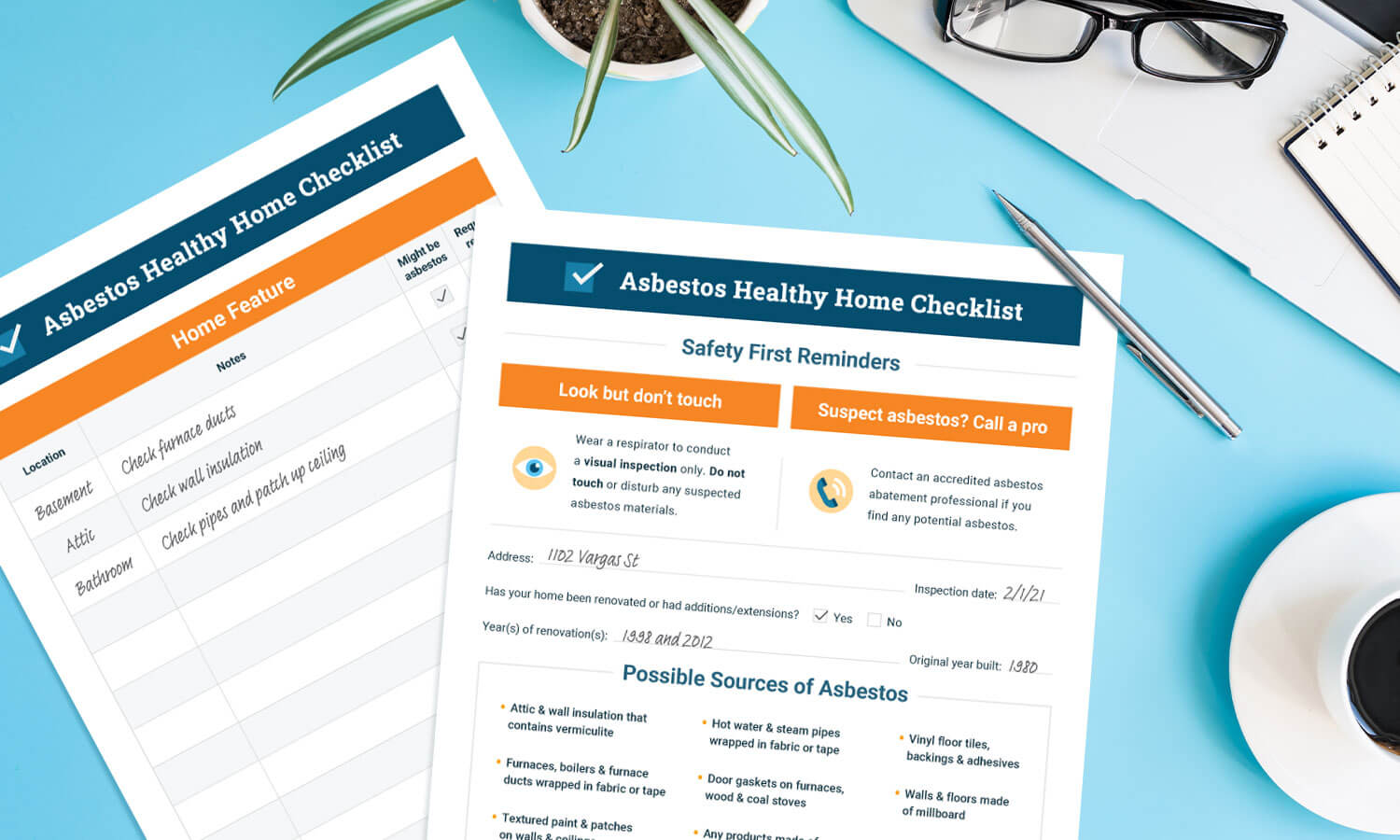
We put together a printable checklist to help you track suspected asbestos risks in your home. Wear a respirator when conducting your own visual inspection to determine if you need to call in an expert. Keep this document with your home records for future reference.
What to Do if You Think Your Home Has Asbestos
Due to the documented dangers of asbestos fibers being released into your home, contacting an asbestos abatement professional is the best way to guarantee the situation is handled properly.
Hire an Asbestos Abatement Professional
There are typically two types of accredited asbestos experts who can be brought in to assist.
- Asbestos Inspectors: These professionals generally conduct home and building inspections, assess conditions, take samples for testing and provide guidance on needed corrections. They can also provide follow-up inspections and air monitoring after asbestos repairs are completed.
- Asbestos Abatement Contractors: Abatement experts specialize in the proper repair and removal of asbestos materials.
Even though federal law does not mandate that asbestos professionals be accredited, some states and local agencies do make it a requirement. Take the time to seek out those who have proper training and accreditation.
Check your state agencies for current lists of accredited asbestos professionals in your area.
Schedule Your Asbestos Cleanup & Repairs
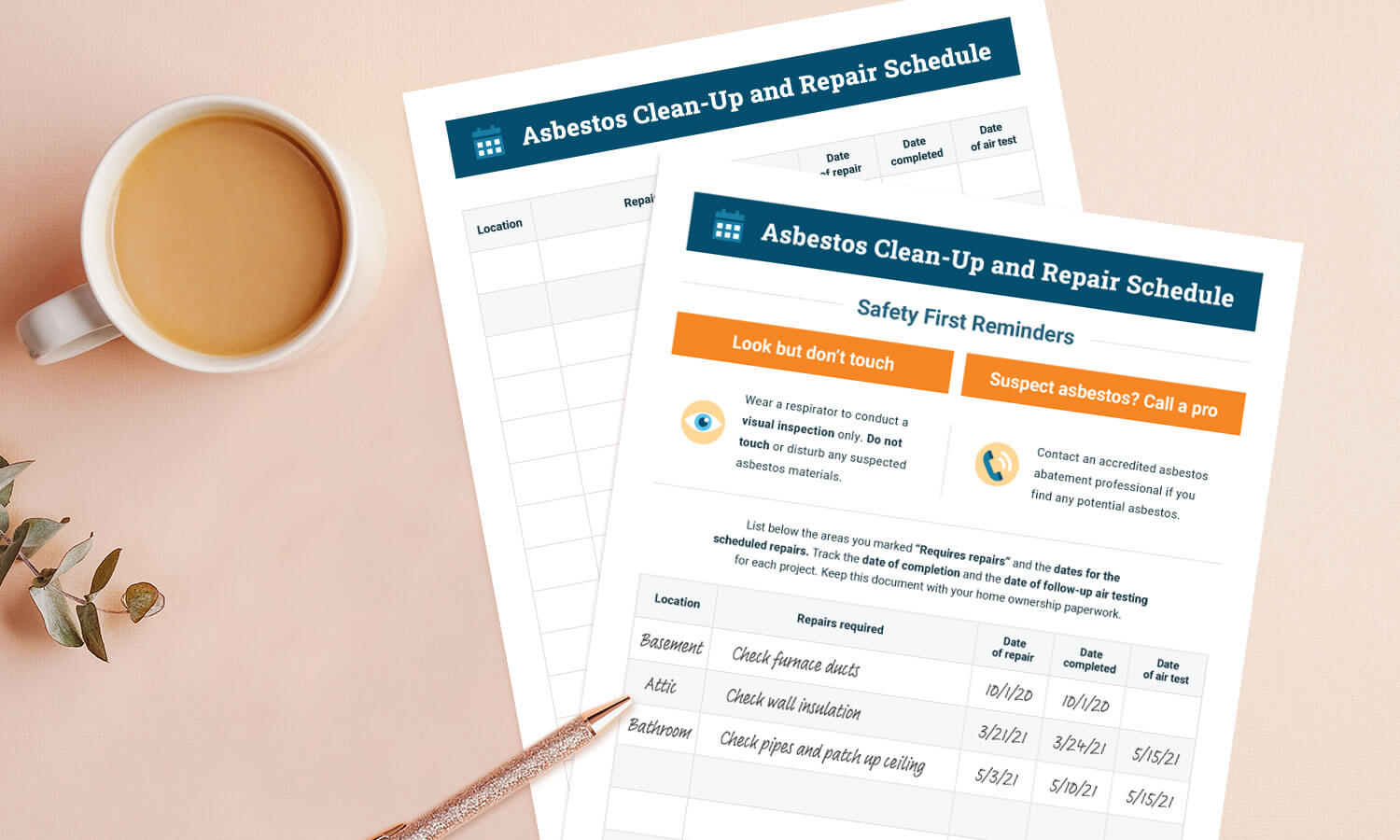
Use this handy printable schedule to plan for the cleanup and repair process.
Although our survey revealed that a majority of Americans have not bothered to test their homes for asbestos, you can be proactive and use these tips to ensure a safer home.
Methodology:
This study consisted of three survey questions conducted using Google Surveys. The sample had no less than 1,000 completed responses per question. Post-stratification weighting has been applied to ensure an accurate and reliable representation of the total population. The surveys ran during June and July 2021.



